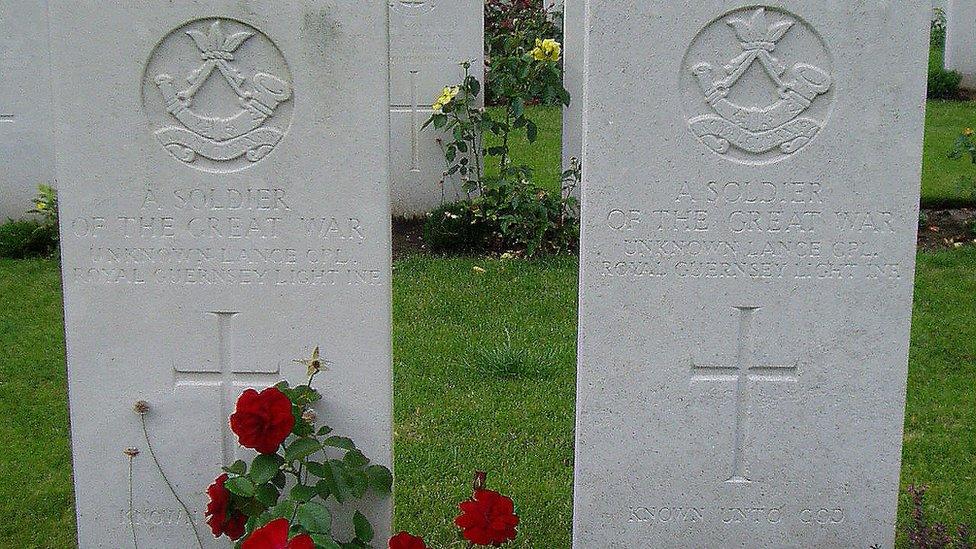Guernsey soldiers' World War One legacy set in memorial stone
- Published
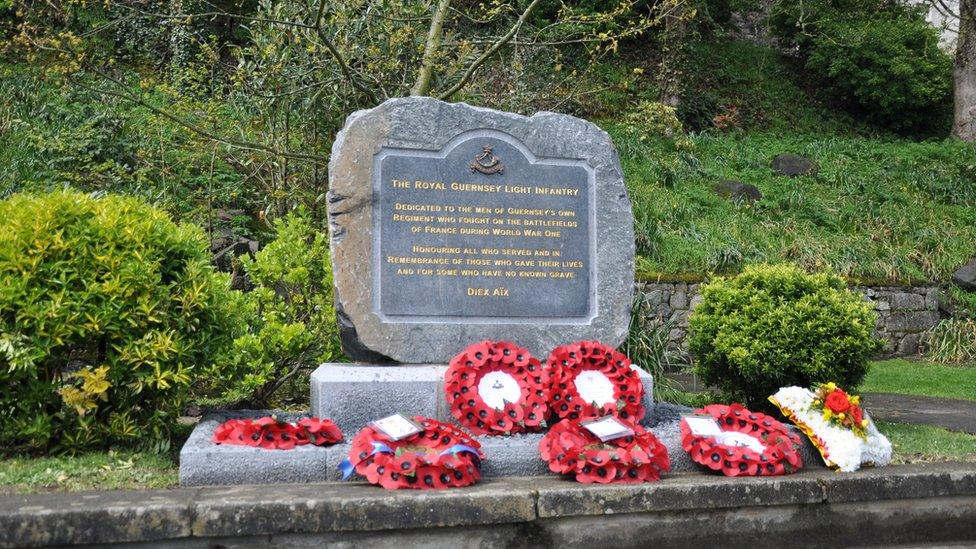
The memorial stone was unveiled at a service at the Sunken Gardens
The legacy of the Royal Guernsey Light Infantry (RGLI) in World War One has been set in stone with a granite memorial in St Peter Port.
It was unveiled at a service on Sunday at the Sunken Gardens, marking 100 years since the Battle of Lys in 1918.
In the battle, the regiment was part of the British forces sent to hold the line against a German offensive toward Amiens.
Out of 500 men, historians say just over 100 regrouped after the battle.
The memorial stone, hewn from Guernsey granite, was funded by the RGLI Charitable Trust and follows another tribute to the island's soldiers who fought in the Battle of Cambrai, erected in November.
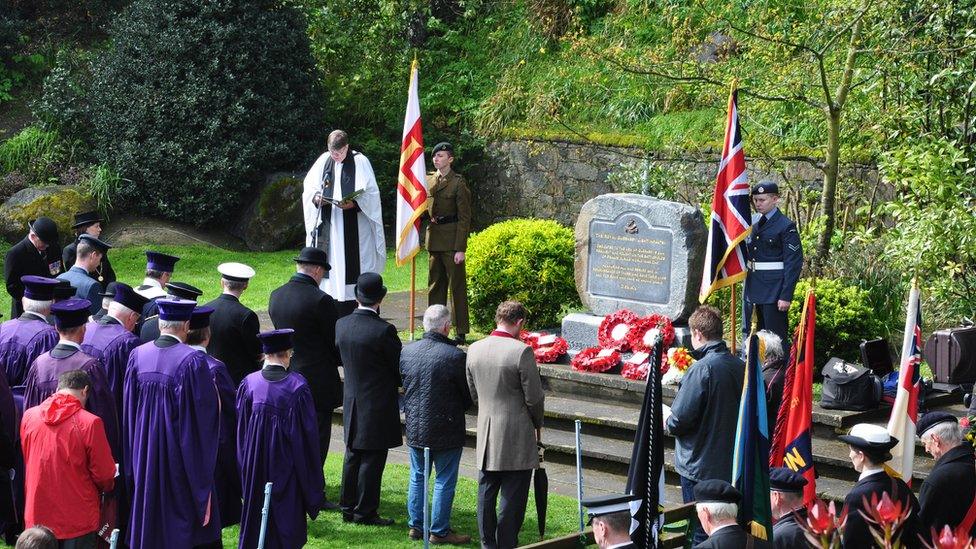
The service took place in St Peter Port on Sunday
It is the first in the island to be dedicated "specifically and solely to the RGLI", according to Guernsey's Deputy Bailiff Richard McMahon.
He described it as "a welcome recognition of the brave men of the RGLI who fought and died in the First World War and especially at the Battle of the Lys where they were virtually wiped out".
In the bidding prayer at the service the Dean of Guernsey, the Very Reverend Tim Barker, said: "We meet in this place to remember the men of Guernsey and Sark who died in the battles of the Great War one hundred years ago.
"As we remember their courage and willingness to serve, we honour their memory."

Battle of Lys - What happened?
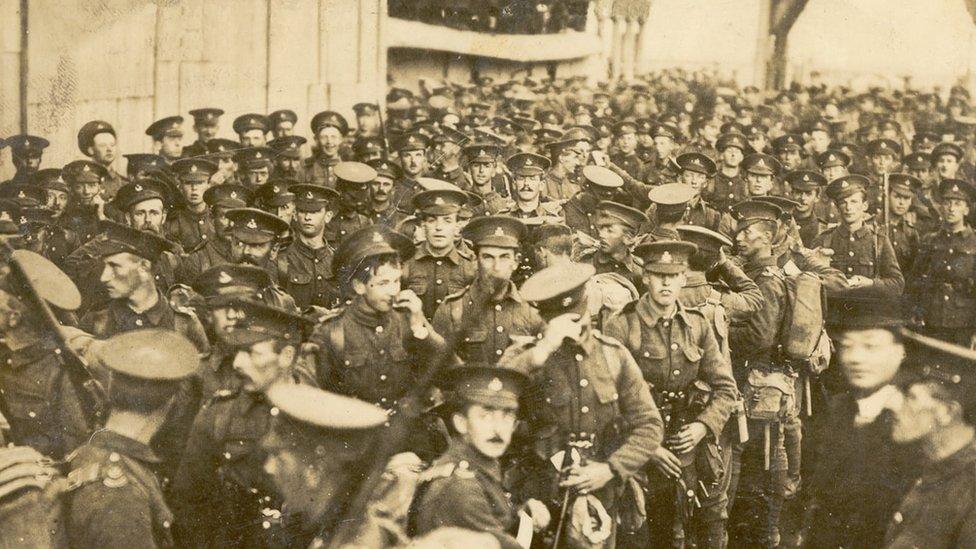
At the height of the battle the RGLI lost 67 men in one day, according to social historian Liz Walton
Military historian Russell Doherty explains more about the context of the battle:
The majority of the battle took place around the French village of Doulieu in northern France between 11-14 April 1918
It was a "blocking action" and "fighting withdrawal" the RGLI took park in with the rest of the 86th brigade, part of the British Army's 29th Infantry Division.
The battle happened as the German army launched several "diversionary offensives" after Operation Michael, which saw their forces "punch a 50 mile hole into the allied line on the Somme"
The RGLI was one of the units sent to "plug a gap" left after the German army "decimated the Portuguese expeditionary force"
Very quickly the "overwhelming" German forces pushed the regiment back, and they withdrew to the Hazebrouck railway, a vital supply route for allied goods moving from coastal ports in France to the logistical centre of Amiens
After four days of fighting, the division was relieved by Australian forces
When battle commenced 500 men of the RGLI "went into the line" but after the fighting only four officers and 55 other ranks remained, with 47 others returning later as "stragglers"
- Published30 November 2017
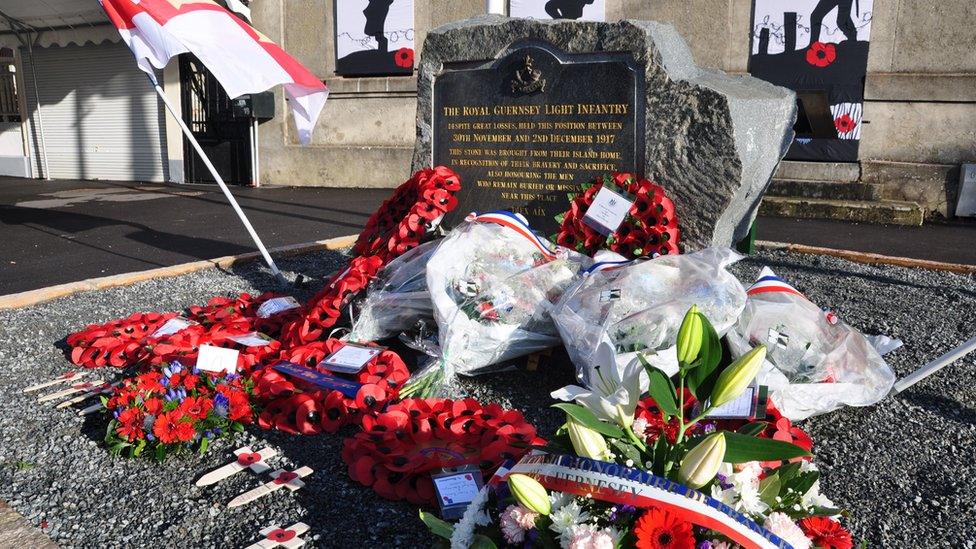
- Published4 June 2017
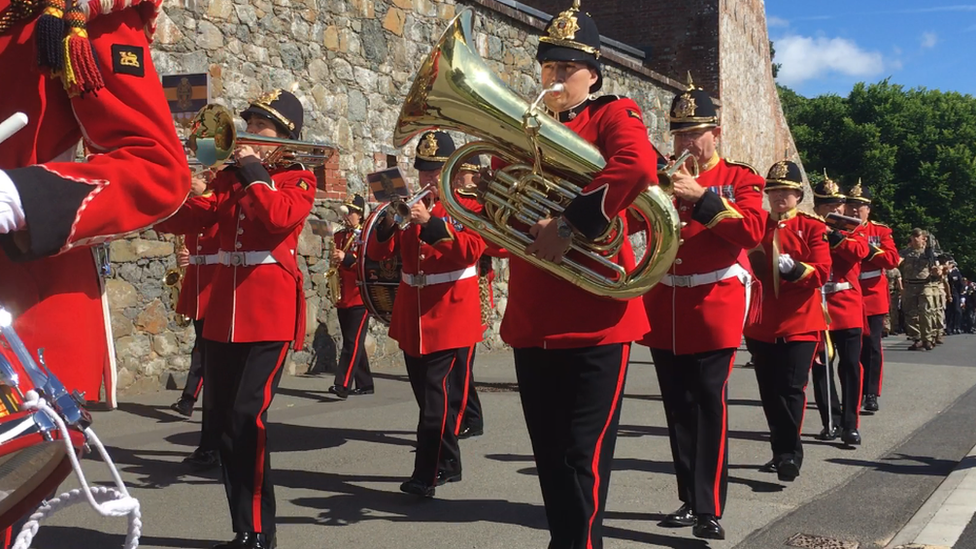
- Published15 November 2016
